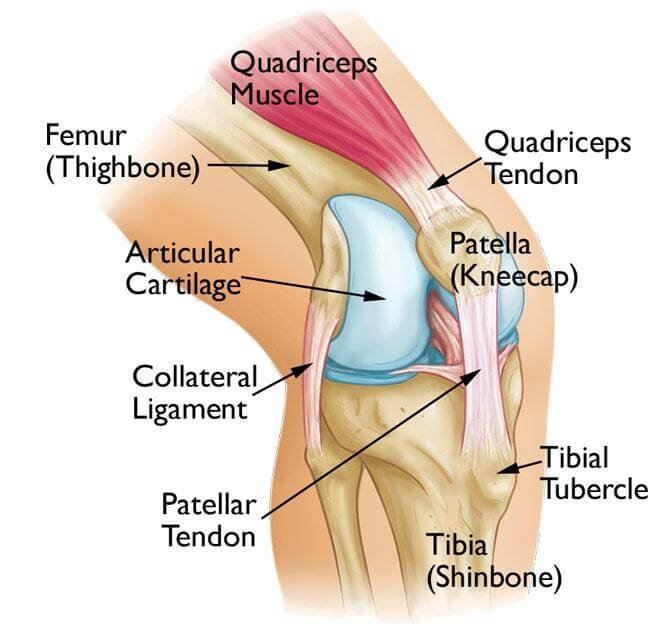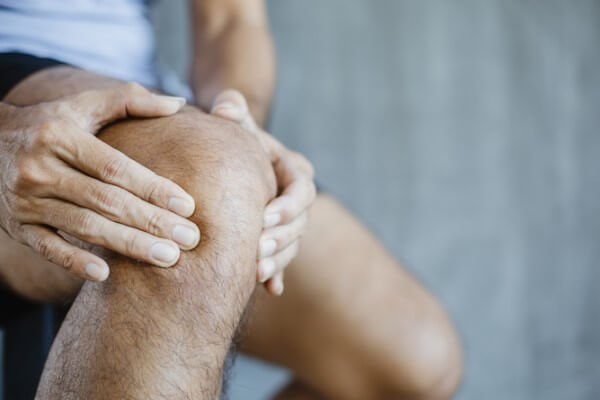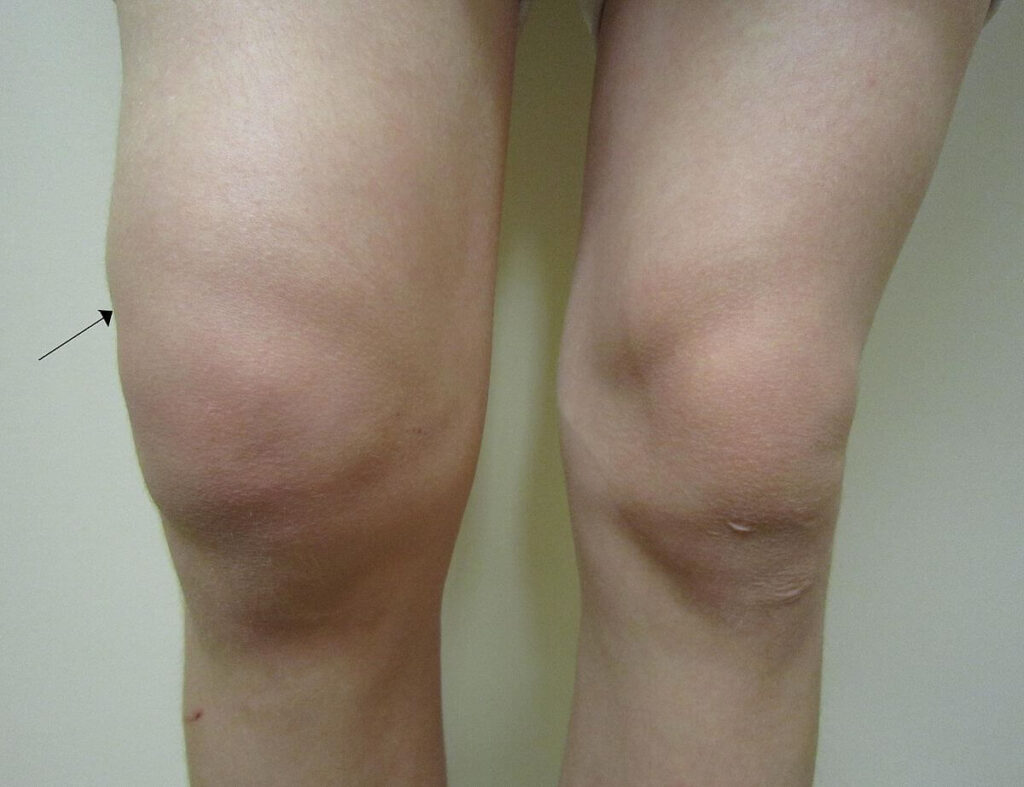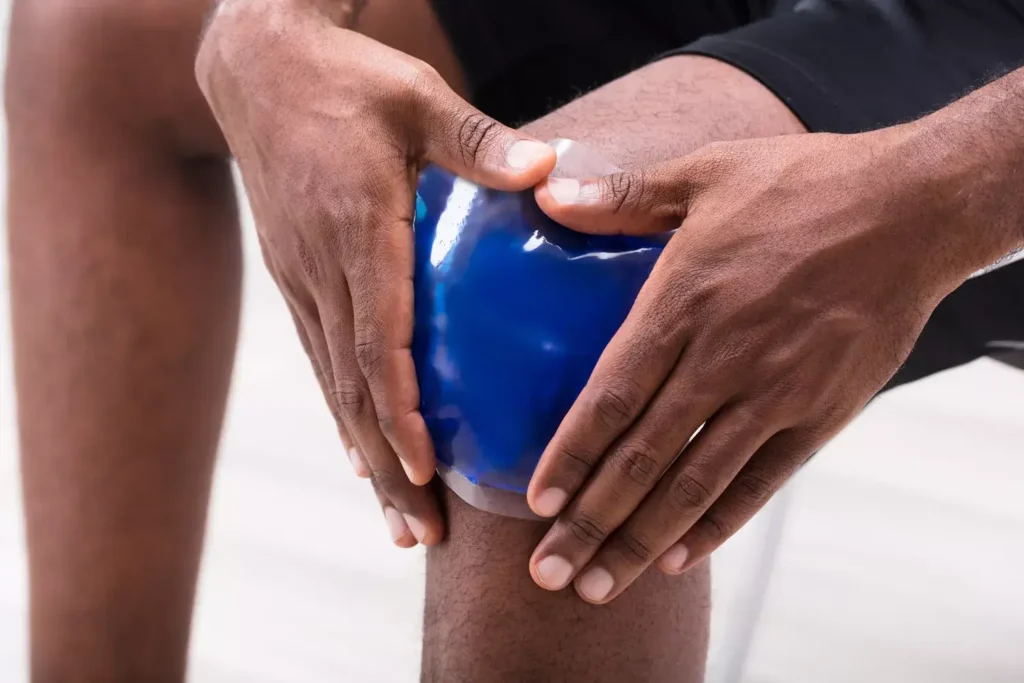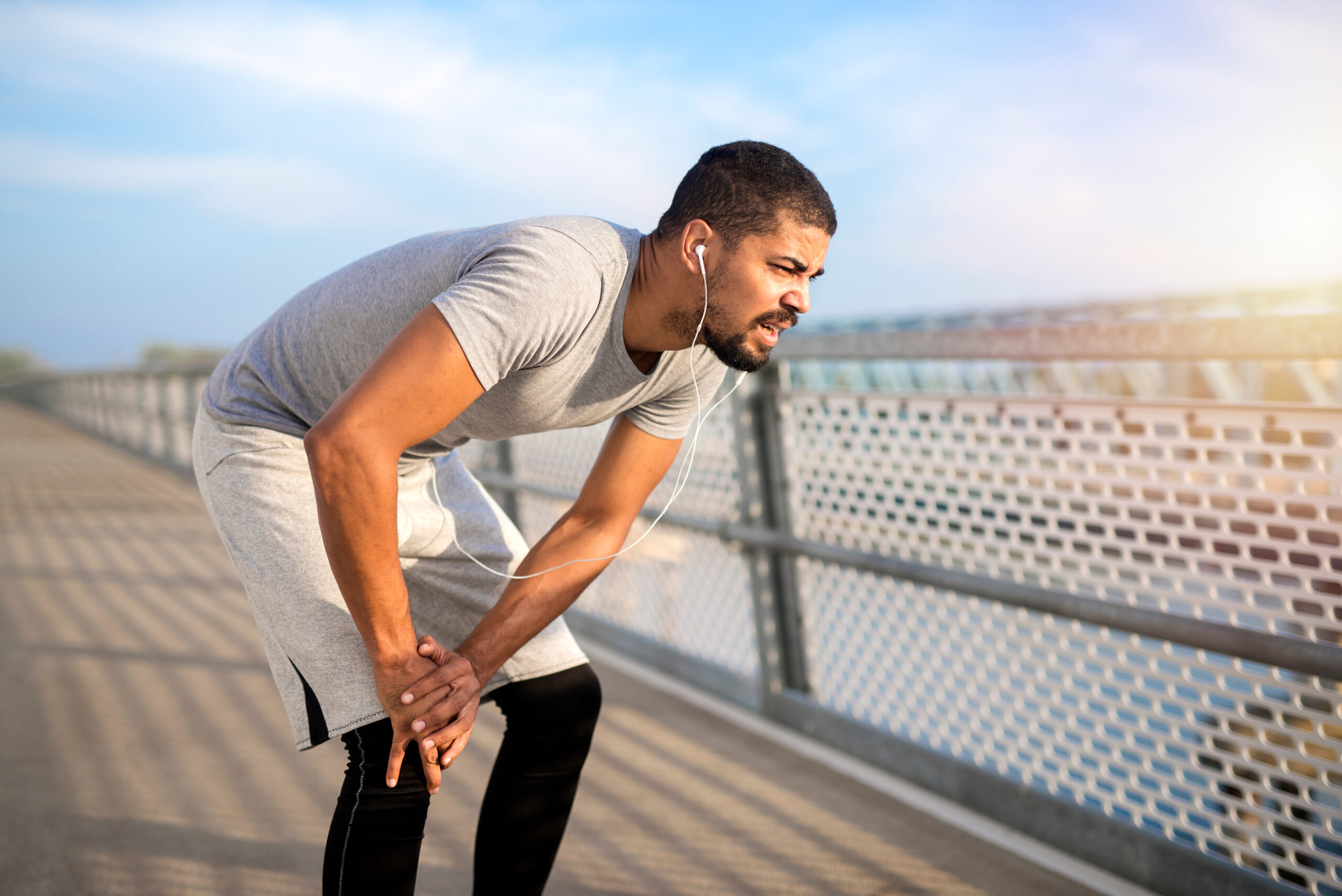
Pain behind the knee when bending the leg can be caused by a number of factors, including:
- Popliteal bursitis: This is inflammation of the bursa, a small fluid-filled sac that cushions the tendons and bones at the back of the knee. It is often caused by overuse, such as from running or jumping, or by direct trauma to the knee.
- Baker’s cyst: This is a fluid-filled sac that forms behind the knee. It is often caused by other conditions, such as arthritis or a torn meniscus.
- Runner’s knee: This is inflammation of the iliotibial band, a thick band of tissue that runs along the outside of the thigh and knee. It is often caused by overuse, such as from running or cycling.
- Tendonitis: This is inflammation of a tendon, a cord of tissue that attaches muscle to bone. Tendonitis can affect any of the tendons around the knee, but it is most common in the hamstring tendons at the back of the knee.
- Meniscus tear: The meniscus is a piece of cartilage that acts as a cushion between the bones of the knee joint. A meniscus tear can be caused by a sudden twist or turn of the knee, or by overuse.
- Ligament tear: The ligaments are strong bands of tissue that help to stabilize the knee joint. A ligament tear can be caused by a sudden force, such as from a sports injury or a car accident.
- Arthritis: Arthritis is inflammation of the joints. It can affect any joint in the body, including the knee joint. The most common type of arthritis that affects the knee is osteoarthritis, which is a degenerative condition that occurs as we age.
- Infection: Infection of the knee joint, also known as septic arthritis, can cause pain, swelling, and redness of the knee. It is a serious condition that requires immediate medical attention.
- Tumor: A tumor in the knee joint, either benign or malignant, can also cause pain.
If you are experiencing pain behind the knee when bending your leg, it is important to see a doctor to determine the underlying cause and get the appropriate treatment.
Prevention tips for prepatellar bursitis:
- Avoid kneeling for long periods of time.
- Use a kneeling pad when kneeling.
- Wear supportive shoes with good cushioning.
- Strengthen the muscles around the knee with exercises such as squats and leg extensions.
Prevention tips for olecranon bursitis:
- Avoid leaning on the elbows for long periods of time.
- Use a cushioned elbow pad when leaning on the elbows.
- Wear supportive shoes with good cushioning.
- Strengthen the muscles around the elbow with exercises such as tricep extensions and bicep curls.
Prevention tips for infrapatellar bursitis:
- Avoid activities that overuse the front of the knee, such as running and jumping.
- Wear supportive shoes with good cushioning.
- Strengthen the muscles around the knee with exercises such as squats and leg extensions.
Prevention tips for pes anserine bursitis:
- Avoid activities that overuse the inside of the knee, such as running and standing for long periods of time.
- Wear supportive shoes with good cushioning.
- Strengthen the muscles around the knee with exercises such as squats and lunges.
Prevention tips for iliotibial band bursitis:
- Avoid activities that overuse the outside of the knee, such as running and cycling.
- Wear supportive shoes with good cushioning.
- Strengthen the muscles around the knee with exercises such as squats and leg extensions.
Prevention tips for Hoffa’s fat pad bursitis:
- Avoid activities that overuse the back of the knee, such as squatting and kneeling.
- Wear supportive shoes with good cushioning.
- Strengthen the muscles around the knee with exercises such as squats and hamstring curls.
Prevention tips for popliteal bursitis:
- Treat any underlying conditions that may be causing the bursitis.
- Avoid activities that aggravate the bursitis, such as kneeling and squatting.
- Wear supportive shoes with good cushioning.
General prevention tips for knee pain:
- Maintain a healthy weight.
- Exercise regularly to strengthen the muscles around the knee and improve range of motion.
- Avoid overuse of the knee.
- Warm up before exercise and cool down afterwards.
- Wear supportive shoes with good cushioning.
treatments and definitions for each type of knee bursitis:
Prepatellar bursitis
Treatment:
- Rest: Avoid activities that aggravate the bursitis, such as kneeling and squatting.
- Ice: Apply ice to the affected area for 20 minutes at a time, several times a day.
- Compression: Wrap the affected area with an elastic bandage or compression sleeve to help reduce swelling.
- Elevation: Elevate the affected leg above the level of the heart when resting.
- Over-the-counter pain relievers: Over-the-counter pain relievers, such as ibuprofen or naproxen, can help to reduce pain and inflammation.
- Corticosteroid injections: Corticosteroid injections can be used to reduce inflammation and pain. However, they should only be used sparingly, as too many injections can weaken the tendons and ligaments around the knee.
- Physical therapy: Physical therapy can help to strengthen the muscles around the knee and improve range of motion.
Definition: Prepatellar bursitis is inflammation of the bursa, a small fluid-filled sac that cushions the kneecap. It is the most common type of knee bursitis.
Olecranon bursitis
Treatment:
- Rest: Avoid activities that aggravate the bursitis, such as leaning on the elbows.
- Ice: Apply ice to the affected area for 20 minutes at a time, several times a day.
- Compression: Wrap the affected area with an elastic bandage or compression sleeve to help reduce swelling.
- Elevation: Elevate the affected arm above the level of the heart when resting.
- Over-the-counter pain relievers: Over-the-counter pain relievers, such as ibuprofen or naproxen, can help to reduce pain and inflammation.
- Corticosteroid injections: Corticosteroid injections can be used to reduce inflammation and pain. However, they should only be used sparingly, as too many injections can weaken the tendons and ligaments around the elbow.
- Physical therapy: Physical therapy can help to strengthen the muscles around the elbow and improve range of motion.
Definition: Olecranon bursitis is inflammation of the bursa, a small fluid-filled sac that cushions the point of the elbow.
Infrapatellar bursitis
Treatment:
- Rest: Avoid activities that aggravate the bursitis, such as running and jumping.
- Ice: Apply ice to the affected area for 20 minutes at a time, several times a day.
- Compression: Wrap the affected area with an elastic bandage or compression sleeve to help reduce swelling.
- Elevation: Elevate the affected leg above the level of the heart when resting.
- Over-the-counter pain relievers: Over-the-counter pain relievers, such as ibuprofen or naproxen, can help to reduce pain and inflammation.
- Corticosteroid injections: Corticosteroid injections can be used to reduce inflammation and pain. However, they should only be used sparingly, as too many injections can weaken the tendons and ligaments around the knee.
- Physical therapy: Physical therapy can help to strengthen the muscles around the knee and improve range of motion.
Definition: Infrapatellar bursitis is inflammation of the bursa, a small fluid-filled sac that cushions the front of the knee below the kneecap.
Pes anserine bursitis
Treatment:
- Rest: Avoid activities that aggravate the bursitis, such as running and standing for long periods of time.
- Ice: Apply ice to the affected area for 20 minutes at a time, several times a day.
- Compression: Wrap the affected area with an elastic bandage or compression sleeve to help reduce swelling.
- Elevation: Elevate the affected leg above the level of the heart when resting.
- Over-the-counter pain relievers: Over-the-counter pain relievers, such as ibuprofen or naproxen, can help to reduce pain and inflammation.
- Corticosteroid injections: Corticosteroid injections can be used to reduce inflammation and pain. However, they should only be used sparingly, as too many injections can weaken the tendons and ligaments around the knee.
- Physical therapy: Physical therapy can help to strengthen the muscles around the knee and improve range of motion.
Definition: Pes anserine bursitis is inflammation of the bursa, a small fluid-filled sac that cushions the inside of the knee below the kneecap.
Iliotibial band bursitis
Treatment:
- Rest: Avoid activities that aggravate the bursitis, such as running and cycling.
- Ice: Apply ice to the affected area for 20 minutes at a time, several times a day.
- Compression: Wrap the affected area with an elastic bandage or compression sleeve to help reduce swelling.
- Elevation: Elevate the affected leg above the level of the heart when resting

